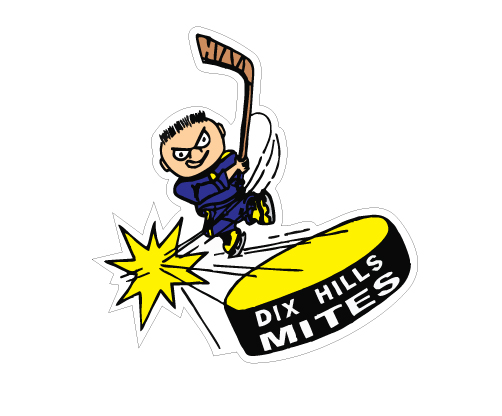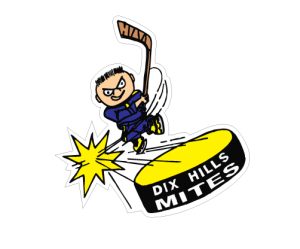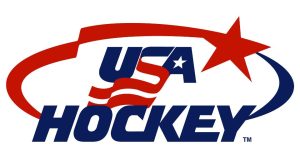The solution to some of life’s greatest challenges can often be found in small packages.
Looking to address such growing concerns as the development of younger players and the rising cost of ice time, USA Hockey is launching a pilot program to combine fun with fundamentals for kids while cutting costs for parents.
The program, which begins this fall with 10 to 15 youth hockey associations around the country, is designed to help the development among Mite-level players by reducing the ice surface, increasing opportunities to touch the puck and shifting emphasis from playing games to fun skill-developing practices.
“This is a program that originates back to the days of rink-rat hockey. It’s the next logical step to the Initiation Program we have in place now,” said Bob O’Connor, USA Hockey’s National Coach-in-Chief.
“Instead of pushing these young players to compete, this allows us to break the game down to its simplest form to teach kids about the game before you let them get involved in competition.”
In addition to preaching skill development, the idea is to get away from the “win at all cost” attitude and let the kids have fun and be creative.
“We need to relax and stop worrying about championships and let the kids have fun. Let’s give the game back to the kids,” said Bob McCaig, Coach-in-Chief for the Southeastern District.
By cutting the ice into thirds using rink dividers, more beginning players will have” an opportunity to play the game on a sheet of ice that is better suited to their size. “The sport of ice hockey is the only team sport in the United States that does not downsize to the age and the size of the kids,” said Val Belmonte, Director, Coaching Education Program for USA Hockey.
“When I played Little League baseball, I didn’t pitch the distance they do in the major leagues. The ball and bat were also a different size and weight. However, we expect 5, 6 and 7-year-old kids to play on the same size rink as a pro, use the same size and weight puck as a pro, defend the same size net as a pro.”
In addition to cutting the ice surface into thirds, teams will scrimmage four-on-four without a goalie. There will be no scoreboard, icing or offsides. Penalties will only be assessed for deliberate acts to injure, but the team will not play short-handed.
Special nets, approximately one-third the size of regulation goals, and lightweight pucks will also be used to make the game more enjoyable for the younger player.
With the emphasis on skill development, practices will outnumber games by at least a two-to-one margin. USA Hockey is encouraging a three-to-one practice-to-game ratio. Practices will be broken into three parts, with the first 10-minute period used for free time and individual instruction. The bulk of the practice will be used for skating, passing and stickhandling drills, with the final 10 minutes set aside for scrimmages.
“This is a step in the right direction. It forces coaches to spend more time teaching skills and back off on the games,” said Art Baldwin, Program Director for the Sno-King Amateur Hockey Association in Kirkland, Wash.
The idea behind the project draws some of its inspiration from European training techniques. Watching NHL players like Finland’s Teemu Selanne and Jaromir Jagr of the Czech Republic speaks volumes to the practices used in Europe. On the home front, the cost of ice time and the growing number of young players left idling on waiting lists spurred USA Hockey to develop a program from the lowest levels on up.
“If you look at the 52 Europeans in the National Hockey League and what do they all have in common? They read the ice well, they’re unbelievable skaters and they handle the puck extremely well,” said Belmonte, who observed the Swedish system during a trip to Stockholm. “What they’ve done in Europe is create an environment where those kids could develop their skills. They handle the puck well, they pass the puck well, and they really use their imaginations to make plays.”
“The difference between us and the Europeans is we compete, they develop,” added O’Connor.
“There’s certain things in hockey that have to be taught. Skating is one of them. If you can‘t get from here to there you’re going nowhere.” By implementing a pilot program, USA Hockey is looking to study benefits of such a shift in training methods while gradually changing the traditional mindsets of those who may think what’s good for the pro is good for the Peewee.
“Our biggest challenge is educating the parents and administrators of these programs of the benefits of changing the traditional expectations,” said Kevin McLaughlin, USA Hockey’s Director of Ice Hockey and Arena Relations.
“We want to show them that change is OK. If you look at the benefits, we’re doing the same thing that other sports have done. We’ve modified the game to fit the skill level, size and age of the kids. That means they’re going to have less ice to cover but they’re going to skate more. They’re going to have a lot more fun. They’re going to touch’ the puck more.”
Based on the initial reaction, the program could take off among youth hockey leagues around the country.
“By doing this a step at a time, USA Hockey is doing this the right way,” said Baldwin. “Ultimately programs like this are going to take off around the country.”
USA Hockey is trying to anticipate some potential concerns among parents and league administrators. Parents may be worried that the game their kids are playing won’t resemble what they see on television and will thus take away some of their enjoyment. Others may say that they don’t want to watch their kid play on a third of the ice.
McLaughlin said the program would likely increase the enjoyment of the game for both the parents and players. Even on the smaller ice surface, players will have to skate more, think faster and react quicker. They will spend more time with the puck on their stick rather than chasing it the length of the ice. They’re also going improve their basic skills because they will spend more time on the ice and less on the bench.
“Watching a kid sit on the bench for two-thirds of a one-hour hockey game to me made no sense. What a kid gets out of it is more practice time, more fun, touching the puck a lot more,” said McLaughlin.
“Simple mathematics tells you that they’re going to touch the puck more because you divide the amount of ice that they’re on by eight players instead of 12. You’ll have success which should provide them with an opportunity to have fun and enjoy the game more.”
“Ice time is the best coach there is,” added O’Connor. “Kids who get [ice time] early are going to be a little more advanced.” Another big change will be the absence of a goaltender. The program will help the future netminders by allowing them the opportunity to work on other aspects of the game that will provide them with a firm foundation for future development between the pipes. “One thing that that any goaltenders coach will tell you is the most important skill a goalie needs is the ability to skate, have balance and be able to move around,” said Belmonte.
In addition to skill development, the program will provide better value for parents. Depending on what the local association wants to do, they will either get more ice time for the same amount of money or they’ll get the same ice time for a reduced cost.
It will also help associations that have a backlog of players who are left waiting in the wings for an opening.
“Some of these programs have waiting lists because you have 100 kids that may want to play and you only have room for 80. By doing this you give more kids the opportunity to participate on the same number of hours of ice,” said McLaughlin.
USA Hockey will provide initial training for administrators, provide the guidelines, educational material, rink dividers, and miniature pucks and nets.
The nets are approximately one-third the size of a regulation net. The light- weight blue puck is the same size but is lighter than an official puck.
The rink dividers are approximately two feet high and run in lengths of ten. They are held together by buckles and Velcro. They’re easy to set up and very mobile. They’re a lightweight nylon on the outside with a foam center.
“With USA Hockey picking up a lot of the costs, this is a way for us to expand our programs without increasing the costs,” said Baldwin.
The pilot program will be open to only 10 to 15 associations around the country. To be considered, programs must have a registered Initiation Program in place, agree to a three-year commitment, offer training sessions for their coaches and provide USA Hockey with a yearly written report. The application deadline is May15.
“Those who are selected will be part of a special project that’s going to help kids and the sport. It’s a great testing ground,” said Belmonte. “It’s the right thing to do for the game and for the kids.”


